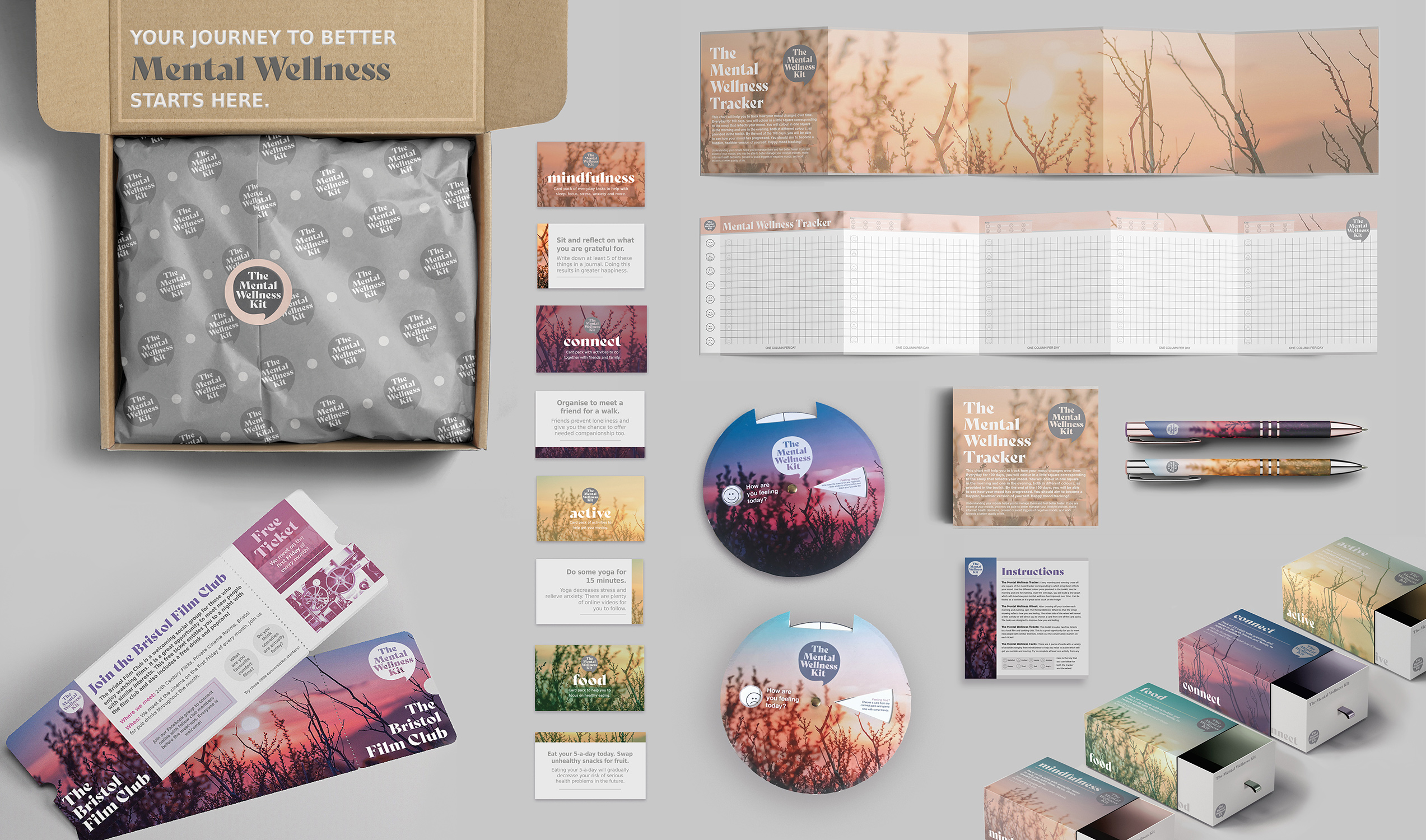
The Mental Wellness Toolkit
The Brief
For this project we were tasked to design a low-tech wellbeing toolkit to improve the daily life of the user who has various mental health struggles. The aim was to improve the user’s overall wellbeing over 100 days by encouraging them to become more sociable, eat better food and practice mindfulness.
User Persona Research
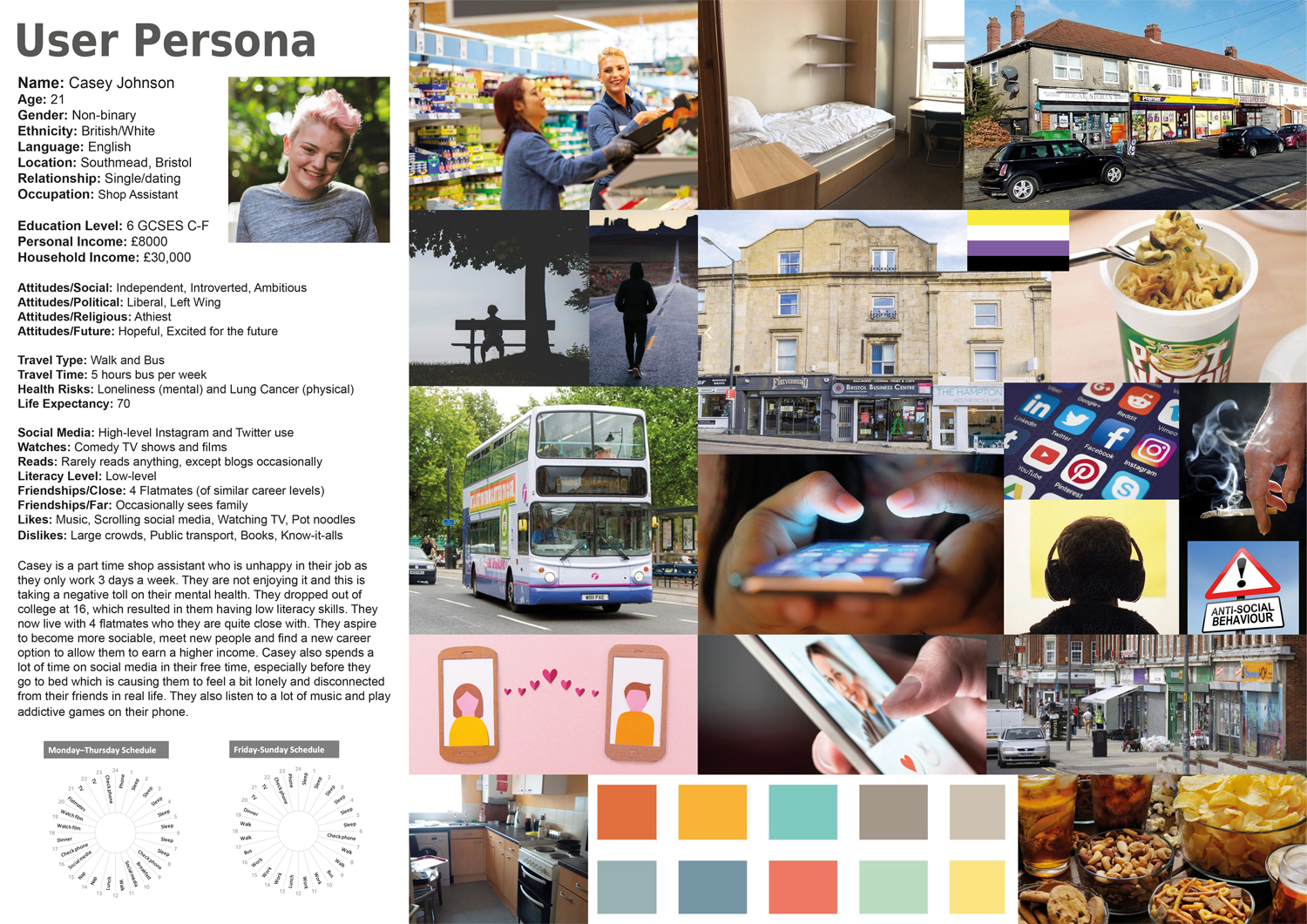
The first step to the project was to define who the user for the toolkit was going to be. We were given a random user who has various mental health struggles and the aim was to design the toolkit to appeal to their specific needs. My target user was called Casey Johnson, a non-binary 21 year-old who lives in Southmead, Bristol. I created a mood-board of imagery that related to my user persona to get a better understanding of their daily life. I also started to think about possible colour choices and what design styles might appeal to them. I also wanted to ensure that it would not only just appeal to my target user but also anyone else as well.
User Persona Habits
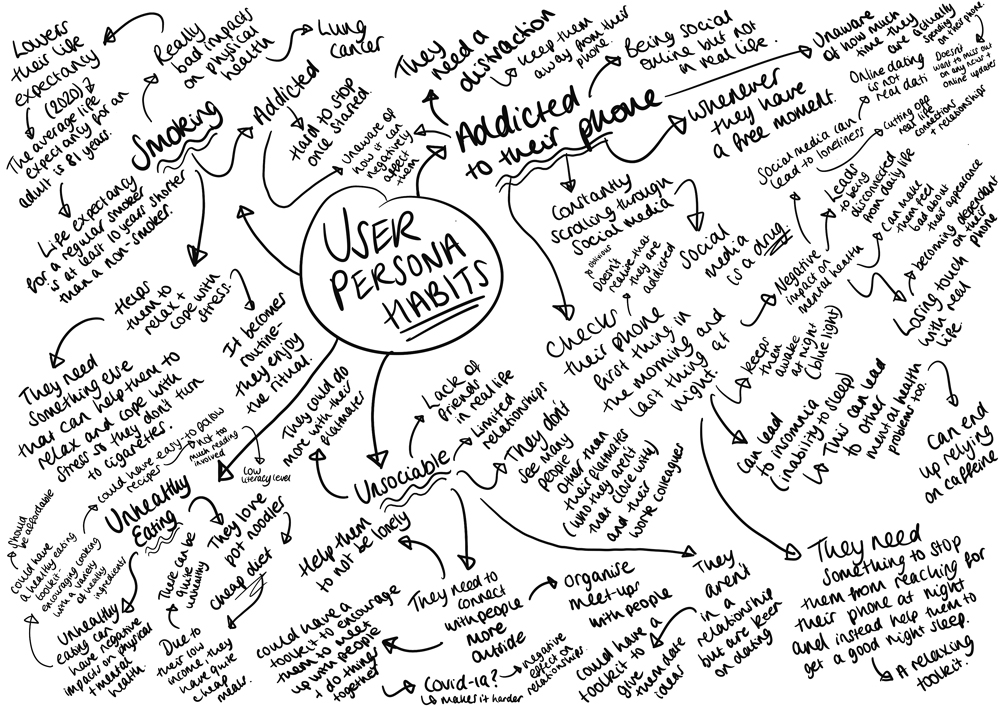
During my research stage, I looked into what habits my target user has and how it affects their mental health. My user suffers from loneliness and lacks social interactions. Loneliness can seriously take a toll on someone’s overall mental wellbeing. They also spend a lot of time on their phone, scrolling through social media. There is evidence that heavy social media users are often likely to suffer from loneliness, especially if they aren’t particularly sociable in real life. Social media can lead them to have lower confidence and cause them to feel less motivated to engage in social interactions. It is found that people who have more face-to-face interactions are generally less lonely.
Some of the user’s hobbies consist of watching films and TV, they find this a good distraction for their loneliness. I created a mind-map to sum up the user’s general habits and started to think about how I could design a toolkit to meet their needs.
Style Inspiration
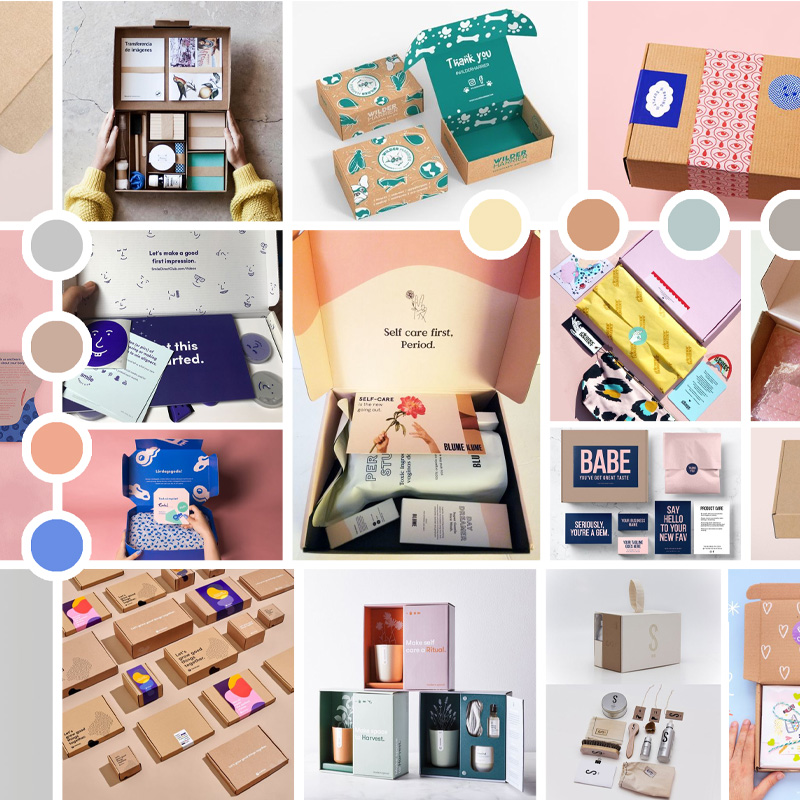
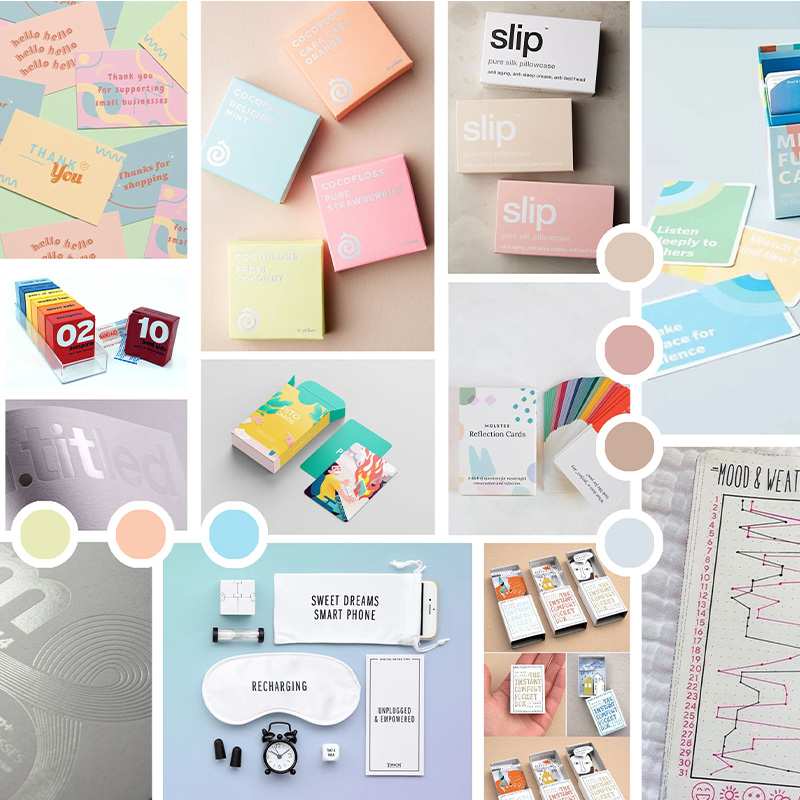
I created some mood-boards of existing products and their packaging. I found the ones that I selected inspiring and thought they could be well targeted to my user. I referred back to this imagery throughout my design process.
I also researched existing toolkits that I could take inspiration from for what to include. I also found that subscription boxes were also really useful to look at seeing as they are generally the same kind of idea as the toolkit.
Sketching
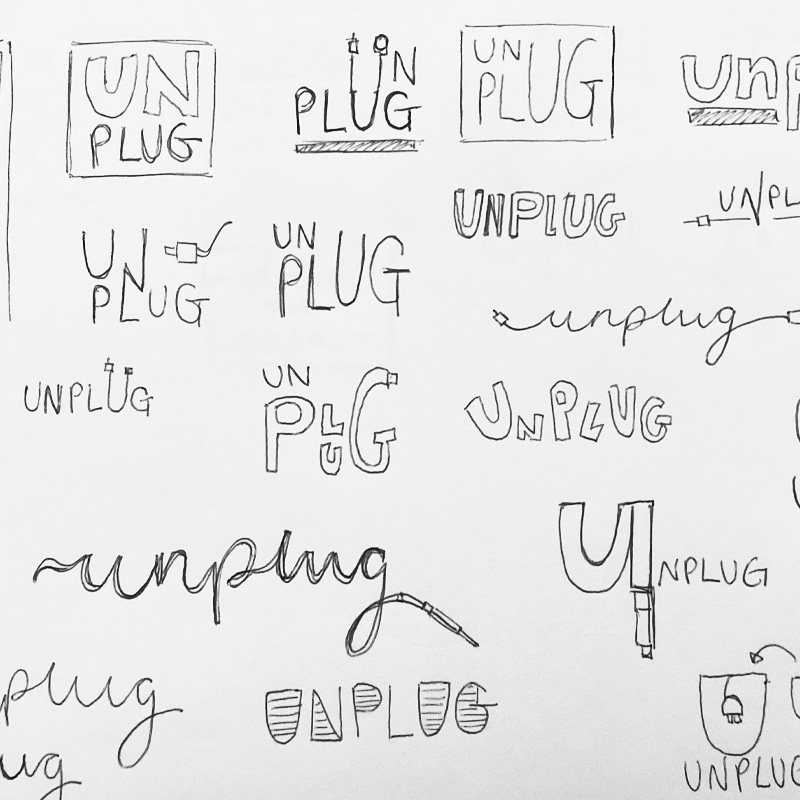
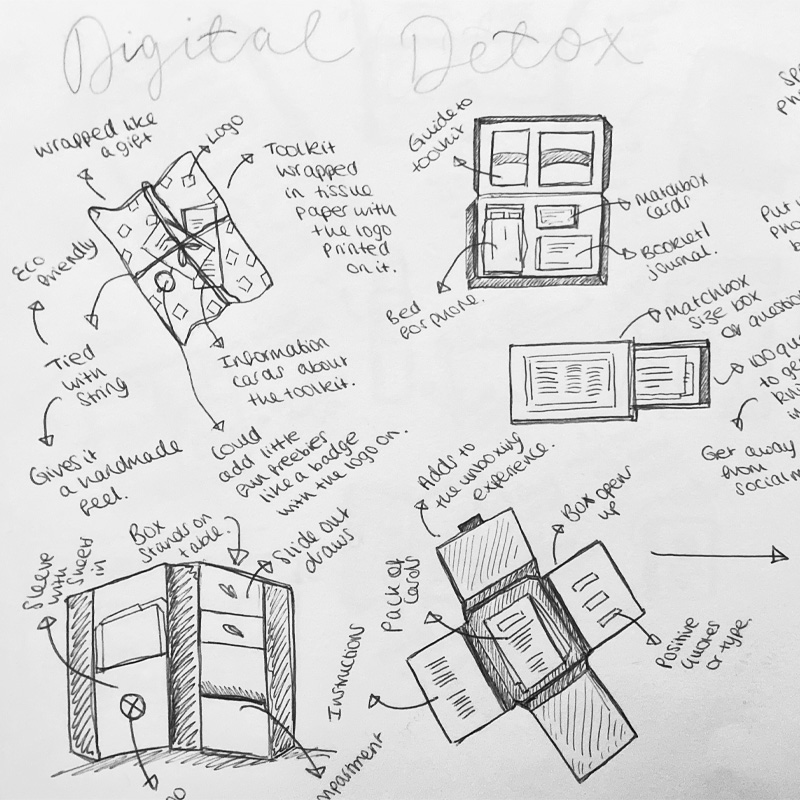
After generating ideas of what my toolkit could consist of, I started to do some sketches of items that I could include. The brand identity was also a crucial part of the toolkit so I spent some time sketching out a large variety of logo ideas. To the right you can see some logo sketches for one of my toolkit ideas- UnPlug, Digital Detox.
Ideation- The Three Routes:
Route One- The Activity Journal
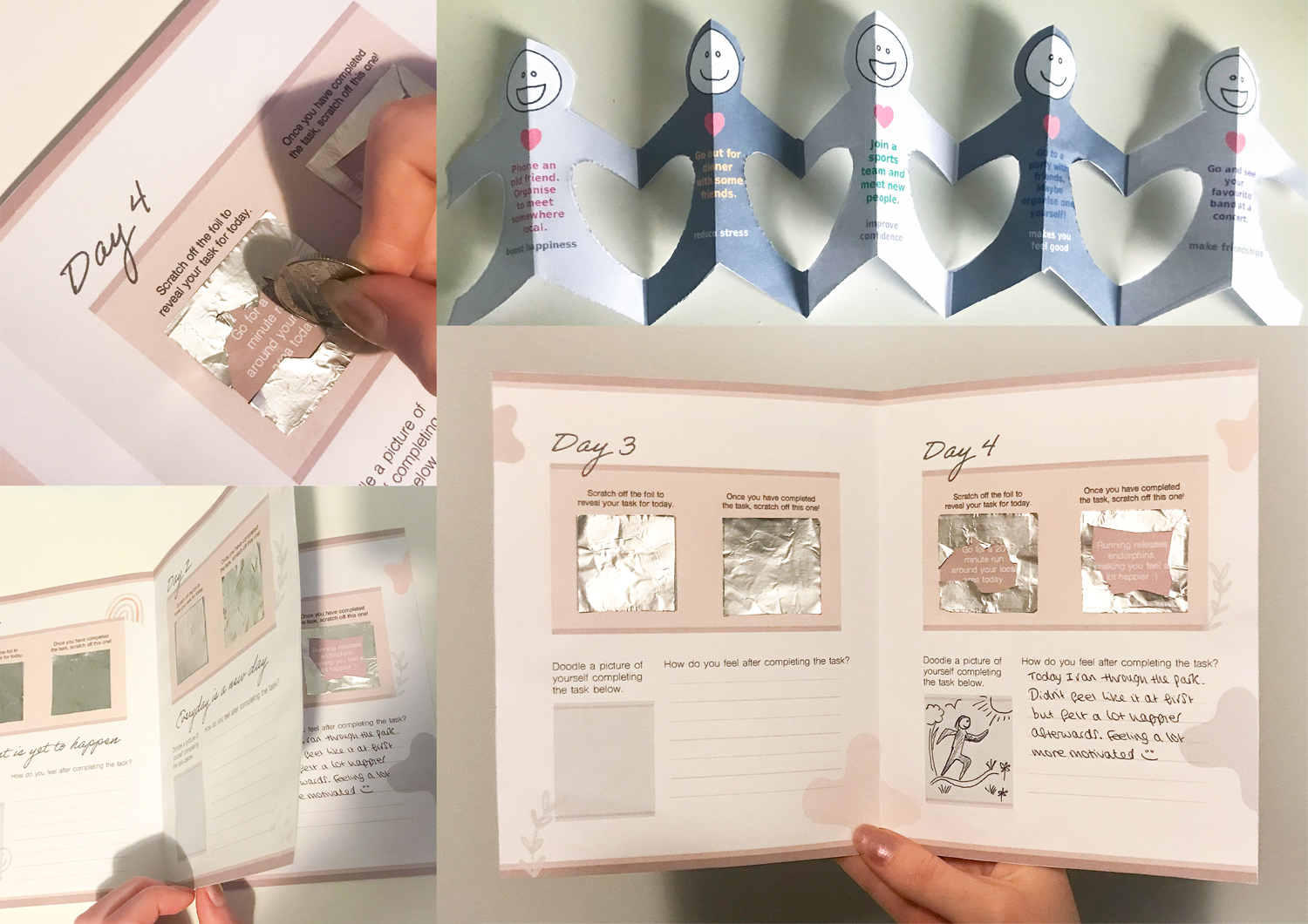
This tooklit is designed to help the user’s loneliness. It also encourages them to become active and healthy. The main component is a 100 day journal which constantly reminds them of the rewards and benefits of each daily task that they scratch off. There is also a paper chain with ideas of activites to do with friends.
This was the first toolkit I created prototypes for. I designed the pages digitally and then printed them off and used tin foil to act as the silver scratch off stickers in the journal.
Route Two- The Wellbeing Tracker Kit
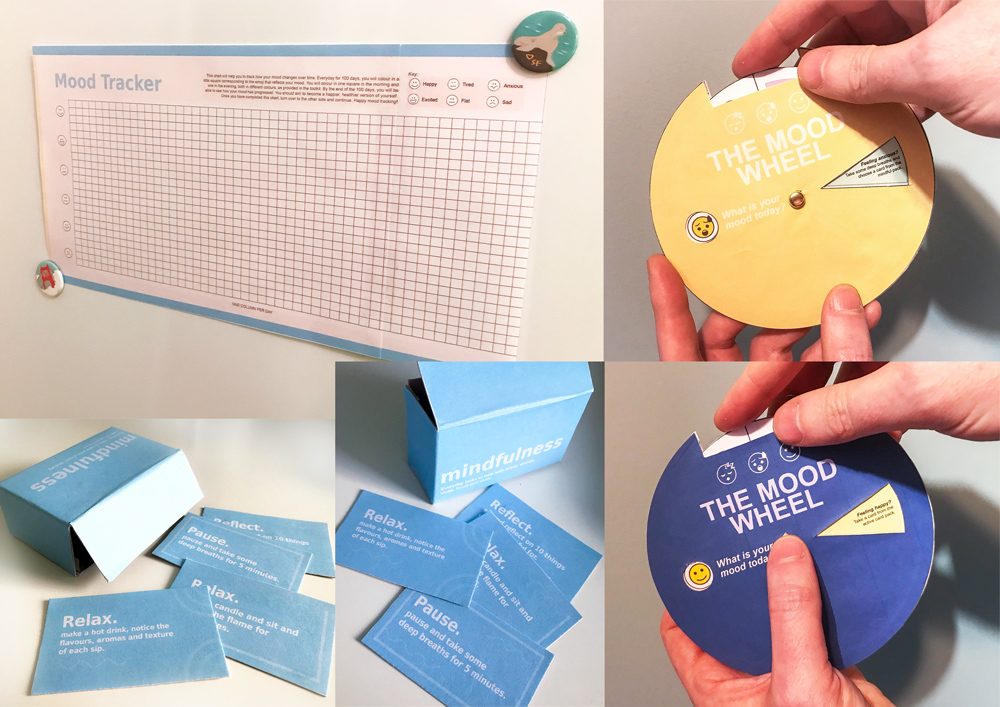
This toolkit is designed to improve the user’s overall mental wellness. They start off by spinning the wheel to find out what they need to do relating to how they are feeling. There are 100 mental wellness activities across 4 different packs of cards and they can also track their mood on the wall chart to see their progress with time.
Although these were just prototypes, I found that making the wheel went a lot better than I expected and this gave me high hopes for the final toolkit.
Route Three- Unplug, Digital Detox
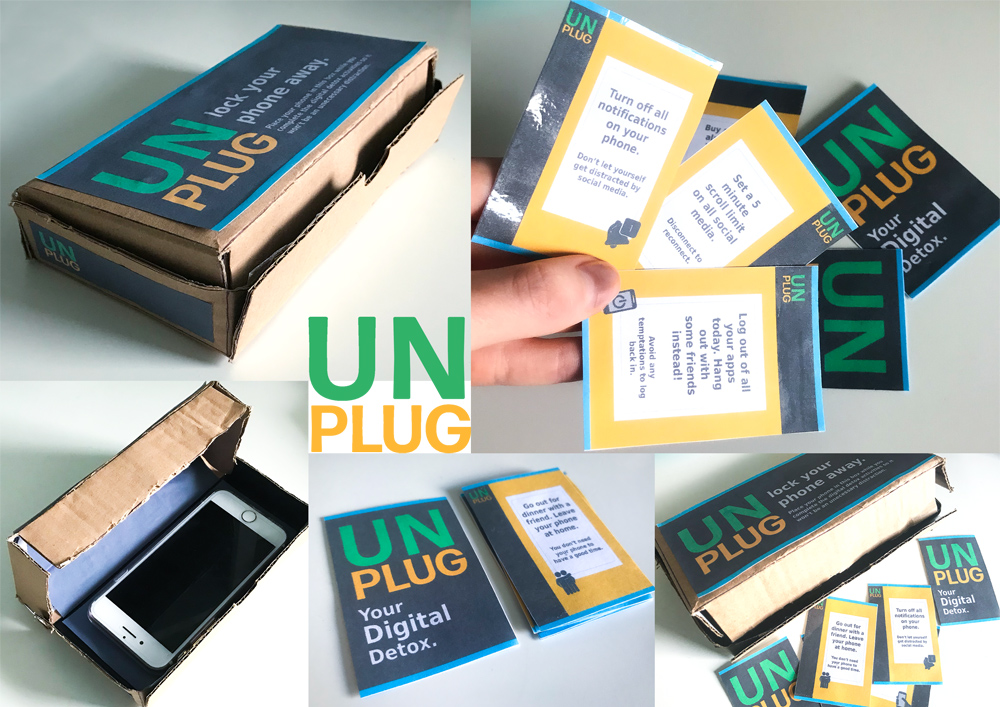
This toolkit is designed to target the user’s mobile phone habits which is contributing to their loneliness. The main element of the toolkit is the pack of 100 digital detox cards with activities to encourage them to not rely on their phone. It also includes a safe that they can lock their phone in and a fidget toy.
Once I printed out the cards, I used cello tape to stick along the edges of the cards. This is because I wanted them to have a shiny texture. The placement of the tape was carefully thought out, and mimics the scrolling motion that our hands do when we use our phones. This is to distract the user by feeling something familiar.
Choosing the Final Route
After a lot of thought and discussion with my peers and tutors, I came to the conclusion that I wanted to go forward with The Wellbeing Tracker Kit as I thought this route had a lot more potential than the other routes. Although I planned on still sticking with some concepts and ideas behind the other two routes and moving them to my new idea.
I decided that this route would best fit my target user's needs as it would meet all of their needs and not just one in particular.
Initial Card Designs
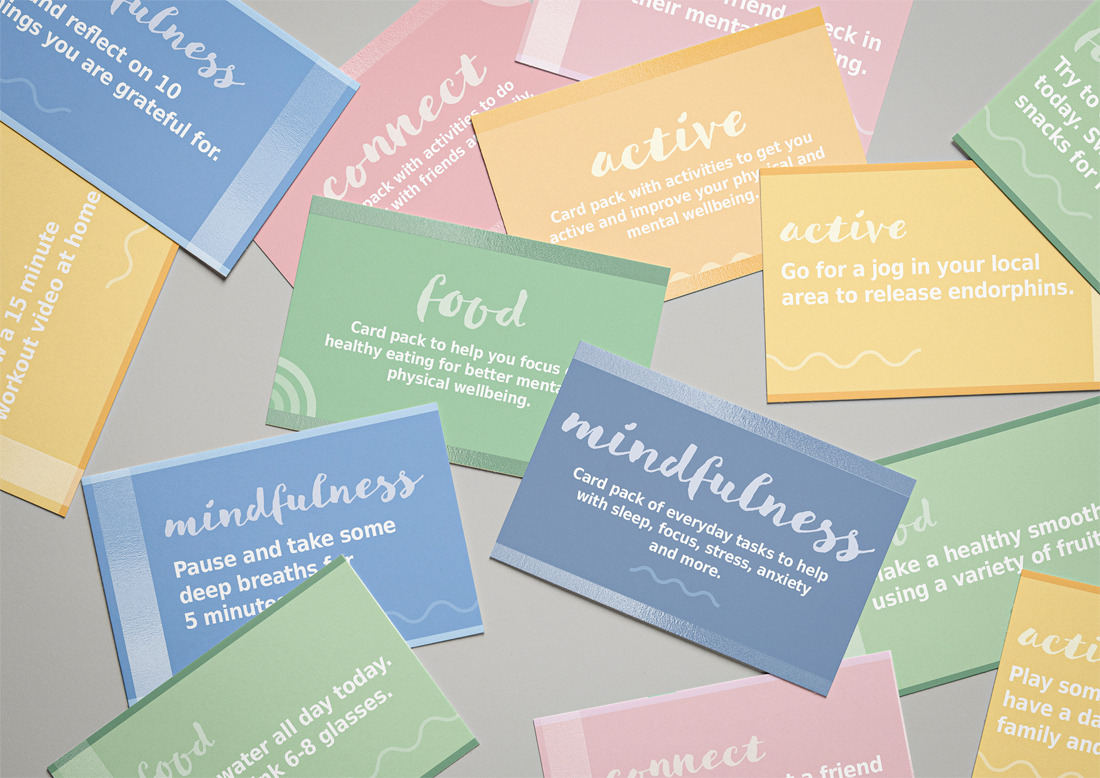
Here you can see some initial card designs that I produced for what I thought would become my final toolkit. I took the shiny textured edge idea from my digital detox prototypes.
Although I liked the idea and look of these cards, I felt that they weren't quite right. I felt that the colours were too fun, when the toolkit wasn't supposed to be all fun. Although this didn't mean that I wanted the toolkit to be completely serious. I wanted the final toolkit to give off a calming look.
The Mental Wellness Toolkit- The Final Outcomes

Below are all of the final components for the toolkit. I have gone for a calming design approach by using a photo of nature throughout the whole kit, ensuring that the designs would appeal to both genders. The main purpose for this toolkit is to help the user’s struggle with loneliness.
A lot of the activities throughout the kit aim to encourage the user to gradually connect with other people again but I have made sure not to overwhelm the user with lots to do. The toolkit also encourages them to become active and healthier since the user tends to eat unhealthy food. By the end of the 100 days, they will be a much better, healthier and more confident version of themselves.
The Mental Wellness Tracker
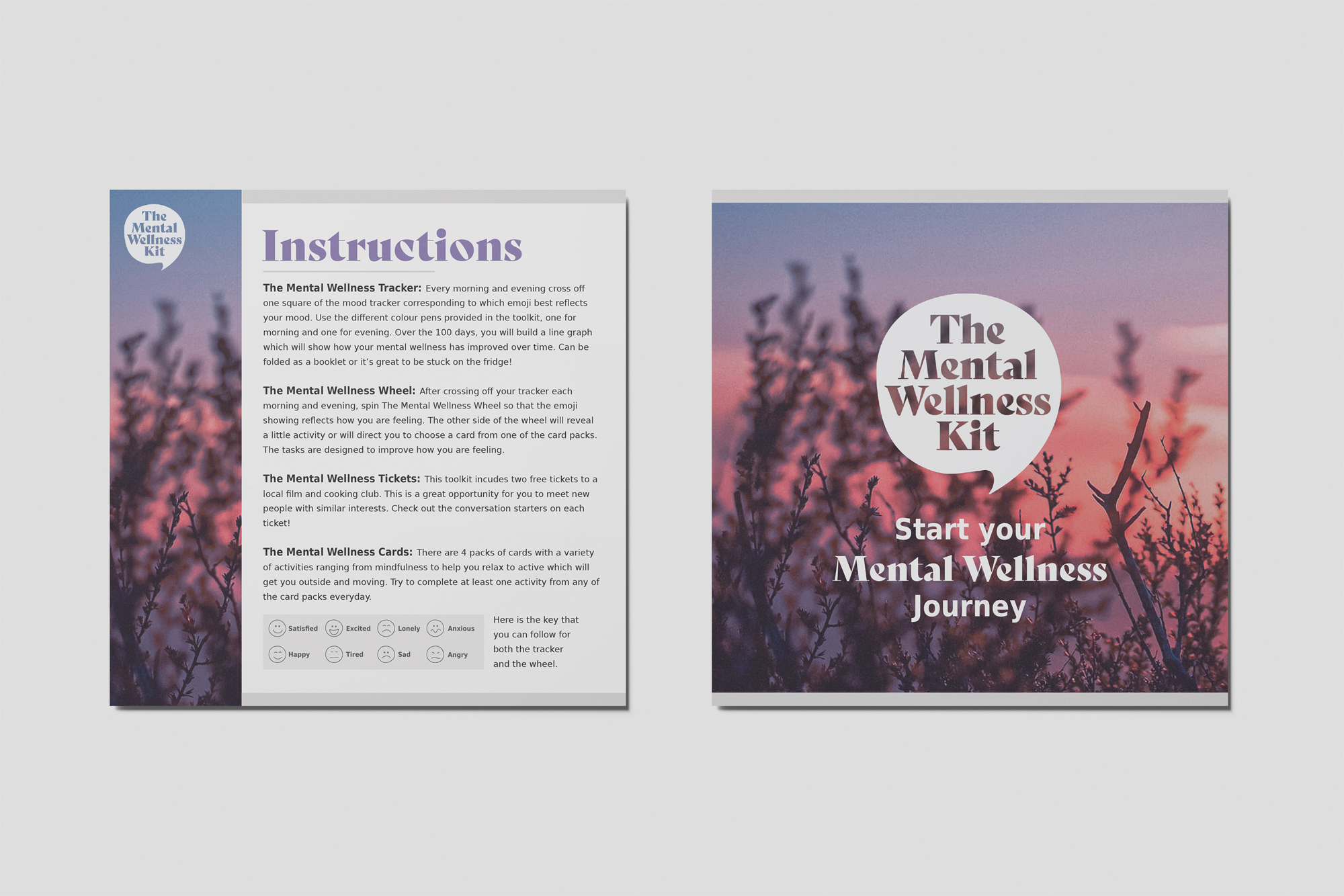
Below is the Mental Wellness Tracker. Each day the user will make a mark that lines up with the emoji that best reflects their mood. They will do this twice a day, once in the morning and once before bed using the different colour pens that are also supplied in the toolkit. Over the 100 days, the user will build up their own line graph which will show how their mental wellbeing is gradually improving over time as they are using the toolkit. The tracker can be opened out and stuck on the fridge, or they can keep it folded up at pocket size. As with all the elements of this toolkit, I have used the same nature imagery to give the user a sense of calm in what could be a hectic day for them. I have made sure to ensure all of the designs would appeal to any gender.
To the right is an instructions card that will come in the toolkit and fully explain what each product in the kit does and how to use it so they get the most out of it.
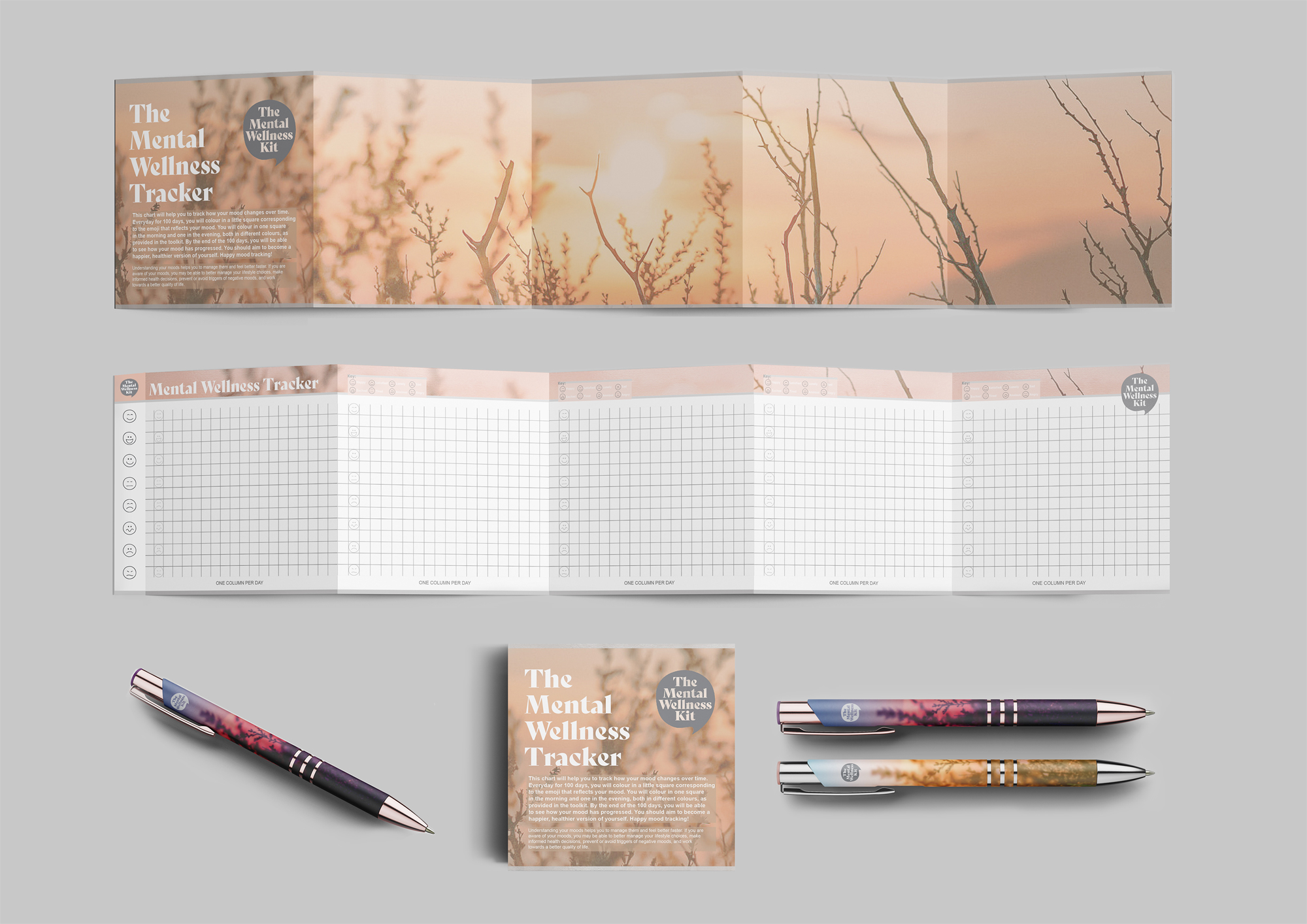

The Mental Wellness Wheel
Above is the Mental Wellness Wheel. The pink/purple side is the night-time side of the wheel. The user will spin the wheel in the evening to reveal the emoji that best relates to their mood. The other side of the wheel will reveal 3 different options of activities to improve their mood before bed.
The brighter coloured side is the daytime side of the wheel. I have purposely edited the photos on each side to reflect night and day. They will do the same thing with the day side and will be prompted to take an activity card from one of the packs to improve their mood.

The Mental Wellness Cards
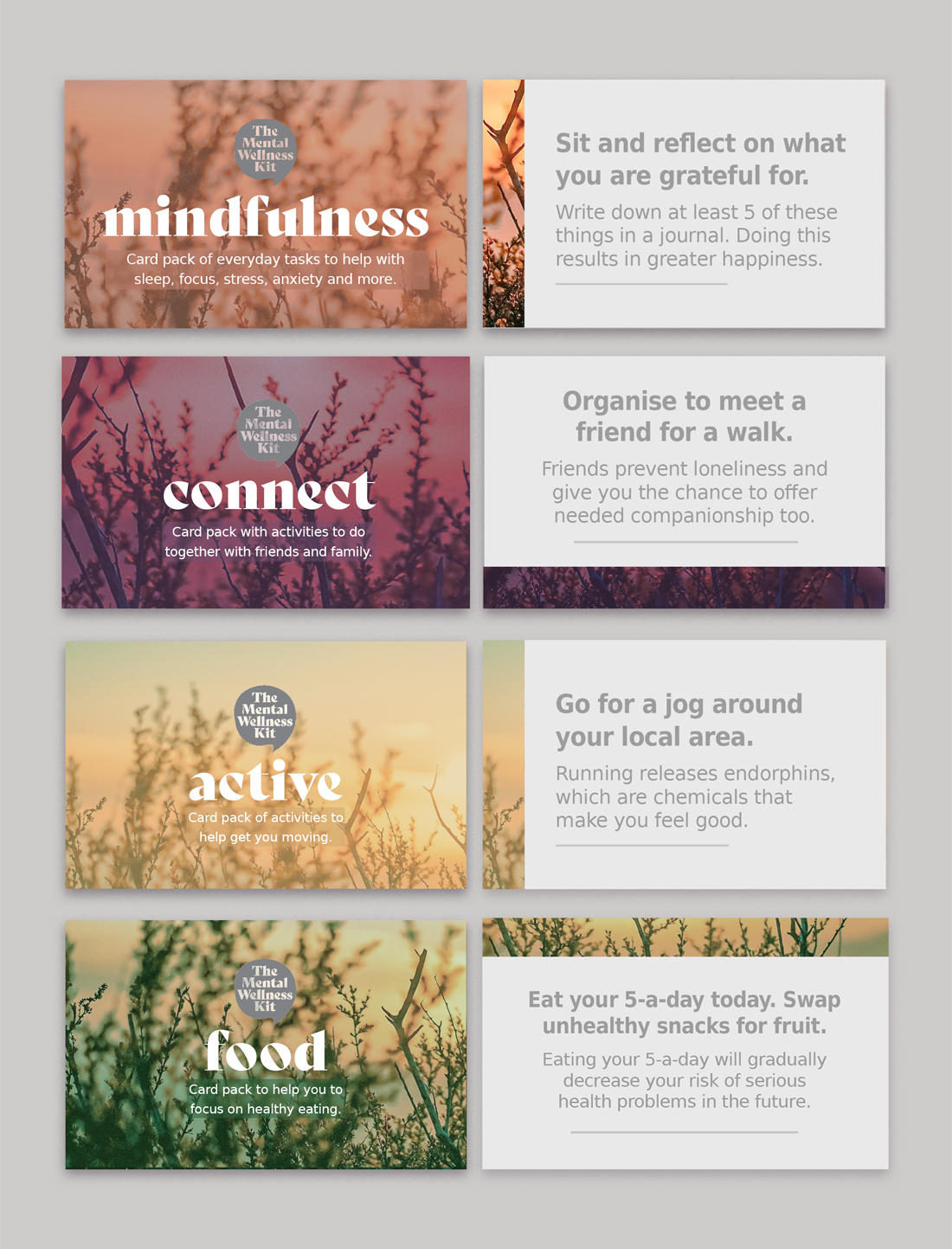
One of the main components of the kit is the 4 different sets of cards. Each card pack focuses on the user’s habits in different ways. There are 25 cards in each pack so there is a wide variety of activities for them to complete. The themes for the card packs are; mindfulness, connect, active and food. So the cards in each pack are tailored to the specific theme.
On the image above you can see a mockup of the cards. I have purposely given each card pack a different colour scheme so the user can tell them apart if they are to mix them around. To the right you can see another image of the cards with some examples of tasks in each of the packs.
The image below shows the individual boxes for each pack of cards. The boxes have a luxury appearance to them as they slide out to reveal the cards.
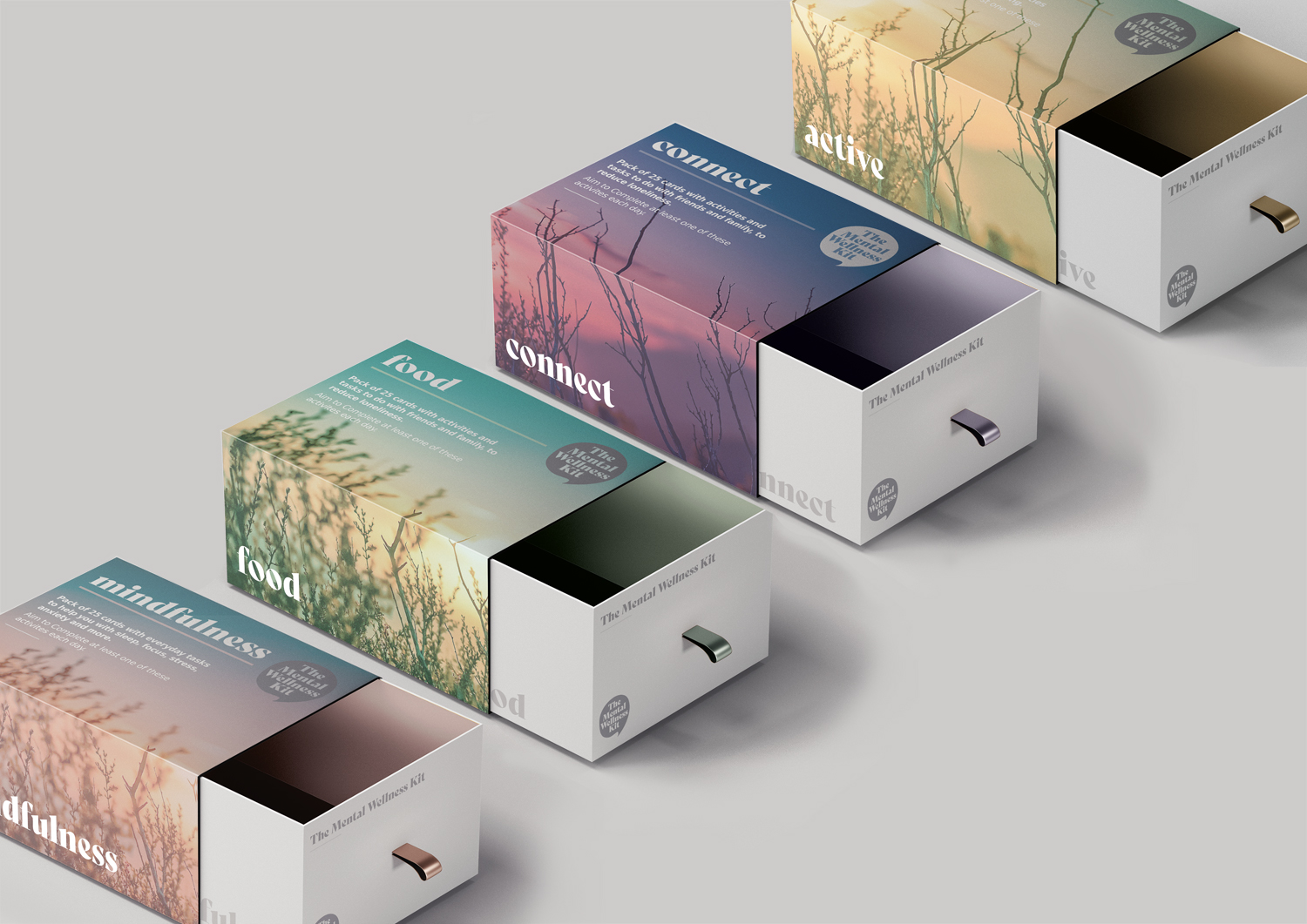
The Mental Wellness Tickets
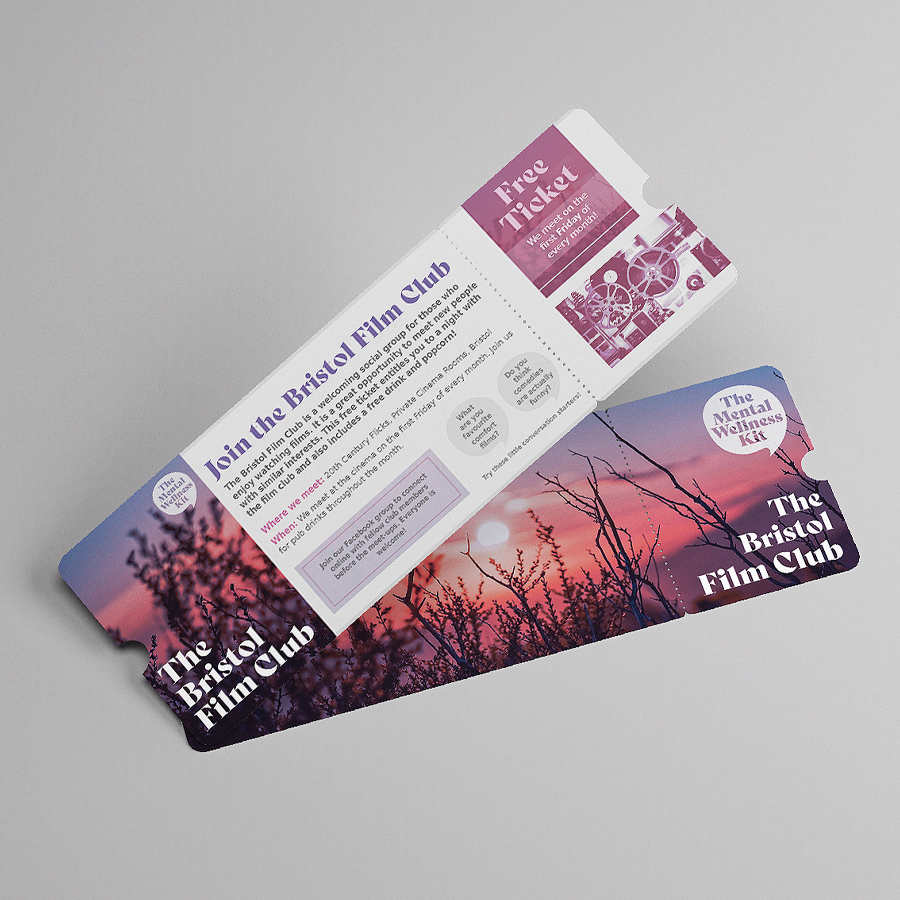
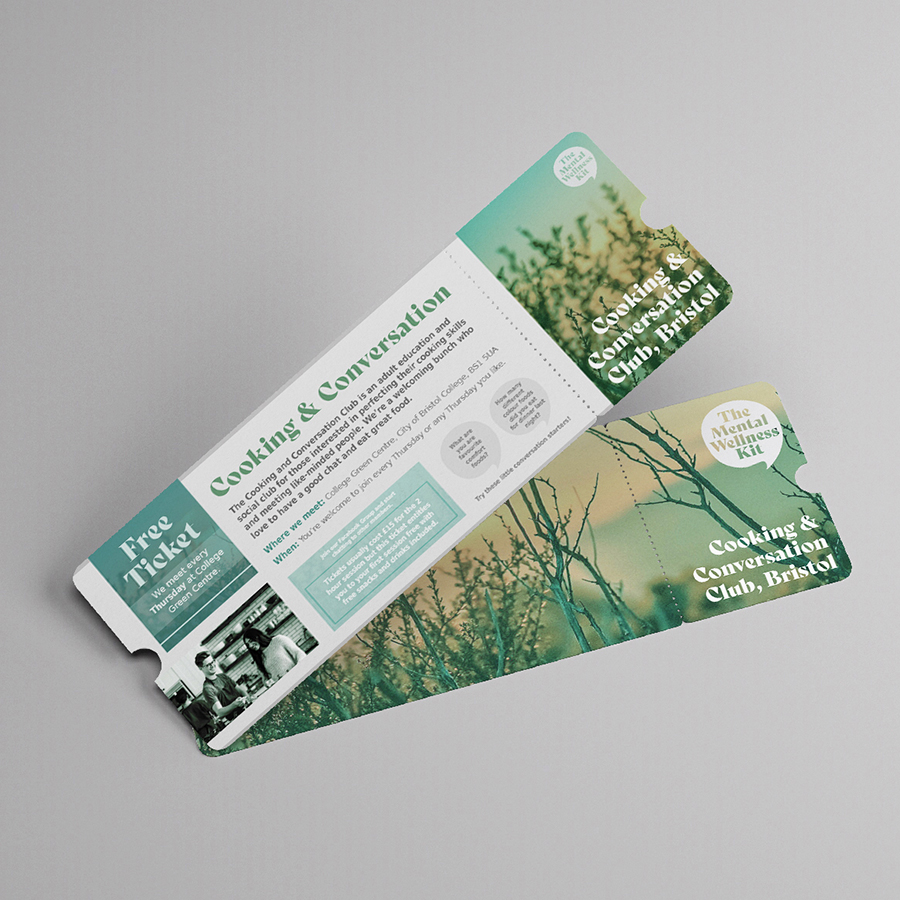
To the right you can see 2 free tickets that’ll be included in the toolkit. These are to get the user to attend a social film club and a cooking club based in Bristol. I produced these based on my research of existing film clubs in Bristol. The purpose of these is to encourage the user to meet new people and get out of their comfort zone to tackle their loneliness. The idea would be that they would attend once with the tickets and then would want to continue to attend the clubs.
The Packaging

Here is the packaging that'll carry the whole toolkit. It's a standard box size that would fit all the components neatly inside and that could easily fit through a letterbox. I repeated the logo across the tissue paper with a small sticker to tie it all together.
The inner box lid has the quote "your journey to better mental wellness starts here." This is to make the user feel positive about the toolkit as soon as they open it. It should give them that bit of motivation that they might need to use the toolkit.
Reflection
I really enjoyed having the opportunity to design a toolkit for a specific target user in this project and experimenting and exploring different ideas to meet their needs. I think my design is a success because I have had some quite unique ideas that I have not seen very much of before. I believe my target user would engage with my designs because I have given them a range of activities and tasks to do across the 100 days to help them break their habits, yet I have also made sure not to overwhelm them with too many things to do.
I did a wide variety of research throughout the project from investigating the causes of my user’s habits to, gathering an amount of visual research to give me design inspiration. I also undertook a process of exploring alternative ideas and design iterations to see what worked well and what didn’t. Getting feedback from my peers helped me to determine the best way forward.
If I had 10 extra days on this project, I think I would see if I could create a physical version of my toolkit rather than digital mock-ups. Although, my digital skills have improved and I have learnt lots in this project.